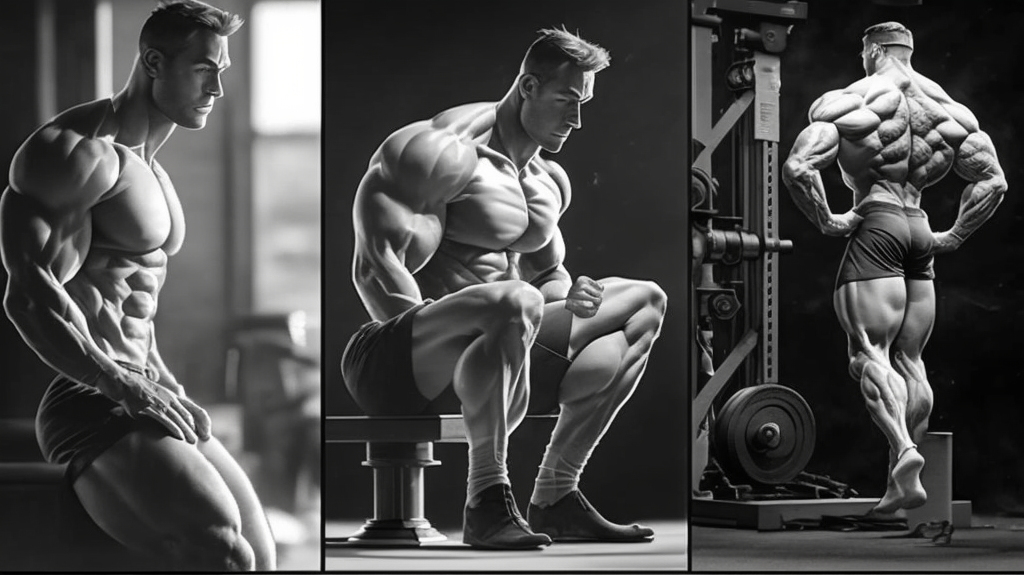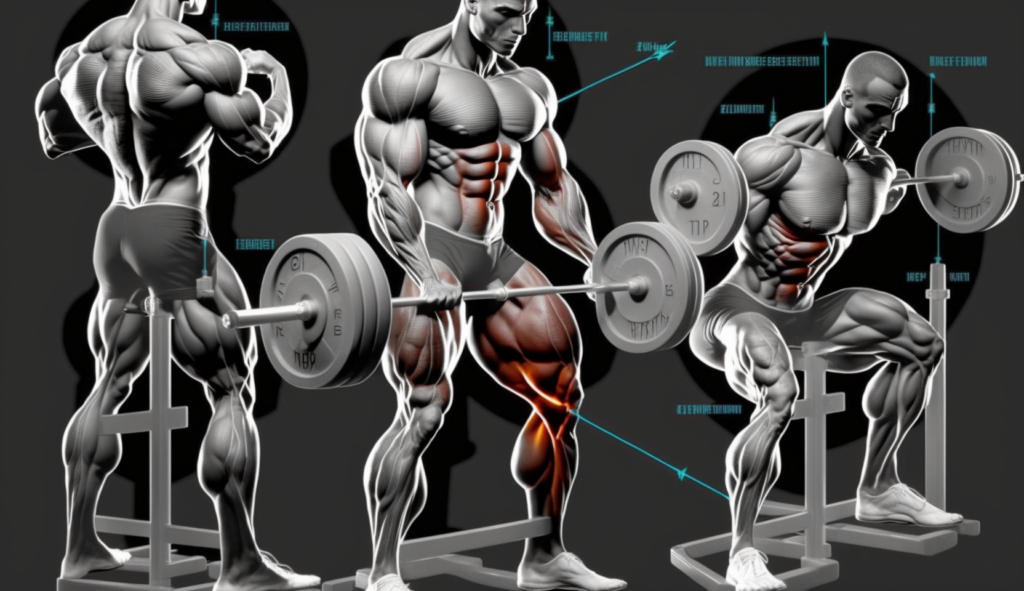Table of Contents
Introduction
To make your training routine effective for hypertrophy it is important to know how many reps build muscle. When it comes to building muscle, the number of repetitions you opt for during strength training is the most crucial part of the workout. The question of How many reps build muscle is subjective as it totally depends on the individual muscles’ goal, body fitness, and overall training experience. Hypertrophy workout focuses only on gaining and increasing muscle size, knowing the exact number of reps and sets is necessary.
This article will guide you to find the answer so you can get closer to achieving your goal.
Importance of reps in building muscles:
The reps you do while doing strength training is important for several reasons that include:
- Reps dictate the intensity of the exercise: The number of repetitions you perform with a given and specific weight determines the severity and intensity of your exercise. For example, lifting heavy weights for short repetitions determines the intensity of the exercise which can help you build muscles.
- Rep ranges target different muscle fibers: the difference in rep ranges targets different locations of muscles. For example, heavy weight lifting for fewer reps targets fast-twitching muscle fibers, and unlike this, lightweight lifting for long reps targets the slow-twitching muscle fibers which are important for muscle endurance and definition. Light weight lifting for long duration targets to promote endurance.
- Rep ranges can be manipulated to achieve specific muscle goals: You can manipulate the rep ranges to achieve your desired muscle fitness and endurance. For example, Heavy weight lifting for a few reps can increase strength and power while lifting a lightweight for long reps can increase endurance and muscle fibers definition. Endurance is the ultimate power of muscles to hold onto weight for a long time without any fatigue and tiredness.

How Many Reps Build Muscle?
Without wasting your time the short answer is;
“4–15 total sets of 5–30 reps per week for each muscle area, with a maximum of 6 sets of 5–30 reps per exercise per workout.”
If you want to know why that recommended number of how many reps build muscles keep reading further.
It’s important to note that the optimal rep ranges for muscle building can vary due to multiple factors such as fitness level, training experience, and specific fitness goals as well. A professional trainer can help you to determine the best rep ranges for your body needs and goals.
For Hypertrophy How Many Sets You Should Do?
We can use a few reliable tools to determine the ideal training volume. Mike Israetel’s volume for hypertrophy is among the popular well researched source. He discusses the various muscle groups and how many reps build muscles and suggests the needed volume.
Here is a quick summary of a few important terms about muscle volumes he coined;
MEV:
Minimum Effective Volume is the lowest amount of work you need for muscles fibers growth
MRV:
Maximum Recoverable Volume is the highest amount of work you need for muscles growth
MAV:
It is the right amount of work between those two extremes
Many pieces of research show that doing more reps and sets can help you grow more muscles and range. However, you need to consider there are some trade-offs if you go for an extreme workout routine.
- More injury risks
- Tearing muscles
- Low level of energy
- lowers job/daily routine performance
So, it is equally important to know how many reps build muscle adopting MAV sweet point.

What is MAV for Hypotrophy?
The exact amount of how many reps build muscle is different for every person as it depends on volume. You need to go through your routine experience to find suitable numbers.
You start with your MEV and build your stamina with time. you start with a total of 4 workout set for a muscle group and over time you find whether to increase your sets or not depending on your soreness.
If you can not add more reps and sets for 1-2 weeks in a row then it means you have reached your MRV.
How Many Sets Per Session For Hypertrophy?
How many reps build muscles with the number of sets for each muscle group on average is 8-10. If you go increasing more rep sets then chances are that you are not going to get good muscle growth results. It’s about quality over quantity. Increasing your rep set over the week is a good approach.

The Best Rep Range For Muscle Growth
The researcher Brad J Schoenfeld suggests how many reps build muscles are 15 to 30 to get a fine hypertrophy range. After reading that you might ask, are 5 reps enough to build muscles?
Firstly, the answer is yes. secondly, low reps are highly dependable on the specific type of exercise. A high range of reps like 30 definitely builds muscles.
How Many Reps Build Muscles: Periodization Planner
If you are not getting satisfactory results from your haphazard training then you should adopt a periodizing routine.
Periodizing is about organizing your training into distinct cycles and finding the results of how many reps build muscles.
A periodizing plan usually has four steps.
Step1:
This step is about Preparatory of high volume (15 or more reps, three to five sets) and low resistance.
Step2:
This phase is more focused on how many reps build muscles for hypertrophy. For high volume (eight to 12 reps, three to five sets) and moderate resistance (50 percent to 75 percent of one-rep max).
Step 3:
How many reps build muscle strength is the main goal of this step and (five or six reps, three to five sets heavy weight) is appropriate.
Step 4:
It is about gaining power for low consistency volume (two to four reps, three to five sets) and very heavy resistance (90 percent to 95 percent of one-rep max).
Hypertrophy Phase: Ultimate Sample guide
To get a clear idea of how many reps build muscle it is better to look at the sample guide with exercises per week.
| Exercise: | Sets: | Reps: |
| Squat | 3-5 | 8-12 |
| Hamstring Curl | 3-5 | 8-12 |
| Bent over row | 3-5 | 8-12 |
| Bench Press | 3-5 | 8-12 |
| Triceps Dips | 3-5 | 8-12 |
| Barbel Curl | 3-5 | 8-12 |
*Just keep in mind that your particular set progression will depend on how you respond to training and your strength.
Training Programs with varying rep ranges for muscle building:

Hypertrophy-focused program:
A hypertrophy-focused program promotes muscle growth and is characterized by moderate to high volume intensity, and shorter rest periods of exercise.
Here is an example of this program:
- Warm-Up: start your training and workout program with a warm-up exercise for 5-10 minutes to increase your heart rate and body temperature. Then do some dynamic stretching to mobilize and activate your muscle’s strength for upcoming training.
- Compound lifts: Start with 2-3 compound exercises that target almost each body muscle, and multiple muscle-group such as squats, bench presses, and deadlifts.
- Isolation exercises: Combine the compound exercises with isolation exercises that target specific muscle groups such as bicep curls, tricep extensions, and leg extensions.
- Supersets: Merge two exercises back to back without any rest to increase the intensity and efficiency of your workout. For example, perform a set of bicep curls followed immediately by a set of triceps extensions.
- Drop sets: Keep performing a set of exercises until failure, then drop the weight immediately by 10-20% and continue again till failure. repeat this for 2-3 steps per exercise.
- Cool-down: Finish with 5-7 minutes of steady-state cardio to restore your heart rate to normal and avoid muscle soreness.
Strength-focused program:
This program is designed to improve your overall strength and is characterized by low to moderate volume, high intensity, and longer rest periods.
Here is an example of a strength-focused program that can provide help in building muscle.
- Warm-Up: Always start with a cardio exercise in the initial warm-up exercise for 5-10 minutes to increase your heart rate and body temperature. Then do some dynamic stretching to mobilize and activate your muscles.
- Compound lifts: Start with 2-3 compound exercises that target almost each body muscle, and multiple muscle-group such as squats, bench presses, and deadlifts.
- Assistance exercises: Follow up the compound exercises with 2-3 assistance exercises to target specific muscle groups such as lunges, rows, pull-ups, and dips. Do 3-4 sets of 8-12 reps with a weight that allows you to reach failure on the last rep, and then repeat the process for the next failure and keep going.
- Rest: Take 2-5 minutes of rest between sets to allow for full recovery of your muscles and heart rate.
- Progressive overload: keep focusing on gradually increasing the weight of your exercises with time. For example, increase the weight by 5-10 pounds each week or every other week respectively.
- Cool-down: Finish the workout session with 5-10 minutes of steady-state cardio to restore your heart rate back to normal and reduce muscle soreness and fatigue.
Remember, the key to building muscle and strength is progressive overload, proper form and technique, and consistency in your training and exercise program. Be sure to also prioritize a proper nutritional diet and adequate rest and recovery to accomplish your muscle-building goals.
Things to avoid while doing rep for muscle building:
When you engage in resistance training for muscle building, there are some things that you should always keep in mind and avoid in order to maximize your results or outcomes and minimize the risk of injury.
Here Are some risks and common mistakes to avoid:
- Poor form: Proper form is essentially effective and safe strength training. Poor form can not only limit your progress in training but also increase your risk of injury. Make sure you have the correct form and technique for each exercise and use the appropriate weight suitable according to your body.
- Overtraining: While it’s important to challenge your muscles, overtraining can do more harm than good. Allow yourself sufficient time for rest and recovery between sets of workouts, and avoid training the same muscle groups over and over.
- Lack of progression: To continue to build muscle, you need to overload your muscles progressively with more weight, sets, or reps over time. Failing to increase the intensity of your workouts can lead to delays in your progress.
- Neglecting nutrition: Building muscle requires a proper diet, including adequate protein and calories. A balanced diet is essential with plenty of protein to support muscle growth and avoid soreness and fatigue.
- Skipping warm-up and cool-down: Warming up before your workout can help prevent injury risk and prepare your muscles for the upcoming workout for better. Cooling down and stretching after your workout can help prevent muscle soreness and stiffness and any contracture build.
- Not getting enough sleep: Sleep is essential for muscle recovery and growth. Aim for at least 7-8 hours of quality sleep hours per night.
- Using improper equipment: Using improper equipment, such as heavy weight lifting belts, straps, or shoes, can increase your risk of injury or limit your progress to build muscle. Make sure you have appropriate equipment for your workout to avoid any injury.
Remember, building muscle takes time and effort, so stay consistent and patient, and avoid these common mistakes to maximize your results.
Conclusion:
It is very important to get a complete idea about your muscle volumes and routine to know how many reps build muscles. For effective hypertrophy on average 8-10 reps per muscle group are sufficient.


